Ingredients and Equipment You Need
- Sourdough Starter: We have an easy sourdough starter recipe HERE.
- Organic Bread Flour: I highly suggest using organic flour when making sourdough. It’s the healthiest option and usually results in a better rise. It’s also essential to make sure you are using bread flour. Bread flour has a higher gluten content and holds together better during the long fermentation time.
- Water: You can use tap water to bake bread; I do. But if you prefer bottled or filtered, that works too!
- Salt: Unrefined sea salt, please! Just make sure your sea salt is unrefined and free from anticaking agents.
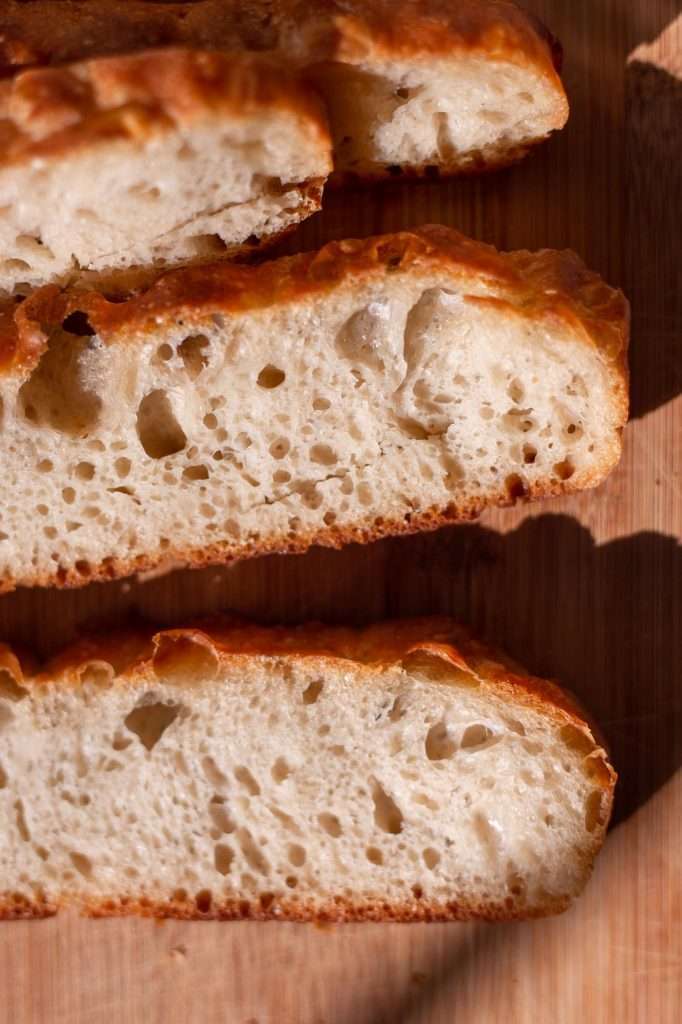

The Easiest Sourdough Bread: Focaccia
Focaccia is arguably the easiest sourdough bread to make. You don’t have to worry about shaping it into a loaf because the focaccia bread is baked in a pan. This makes it entirely forgivable. Here’s a summary of the simple steps to make focaccia:
- Mix all the ingredients into a rough, shaggy dough ball. Let it sit for an hour.
- Stretch and fold the dough, and let it sit for two hours.
- Stretch and fold the dough again, and ferment it overnight.
- Transfer to a parchment paper-lined pan.
- Let the dough relax into the pan and rise for about 2 more hours until it doubles.
- Drizzle olive oil and dimple the dough.
- Bake, cool, slice, and enjoy!
What stretching and folding the dough looks like:
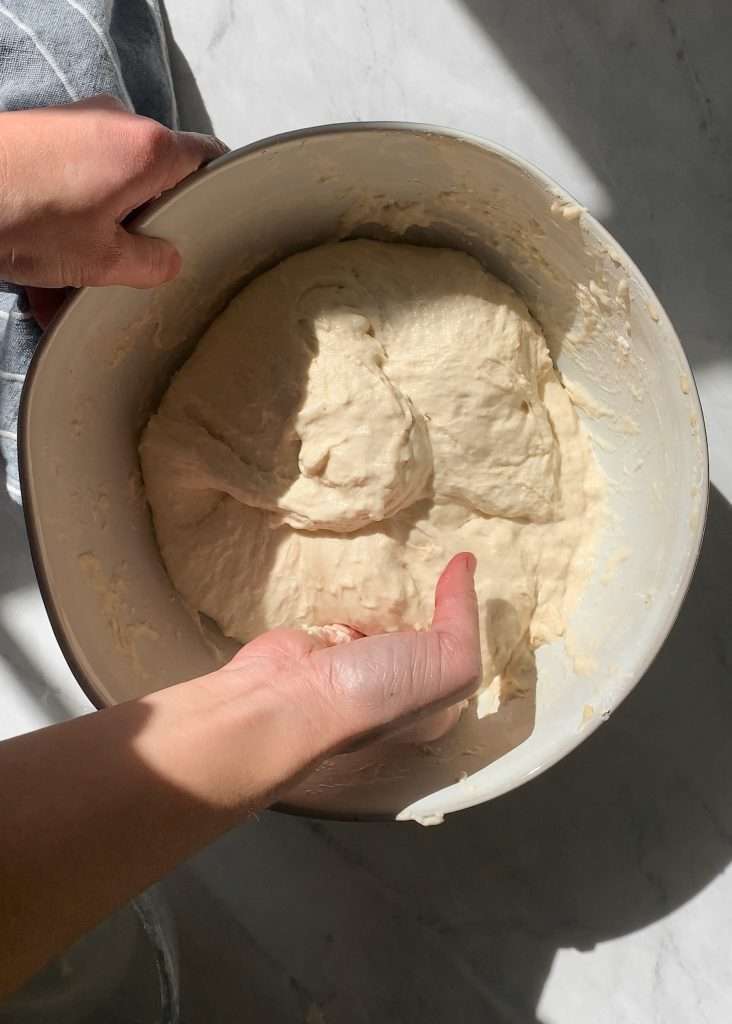
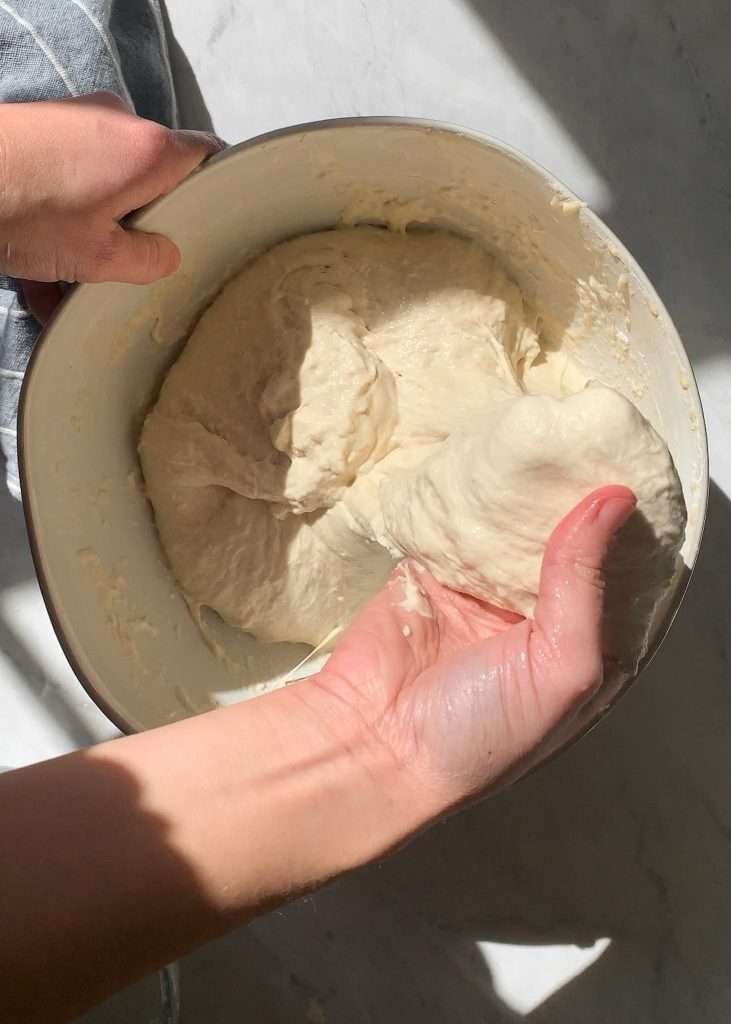
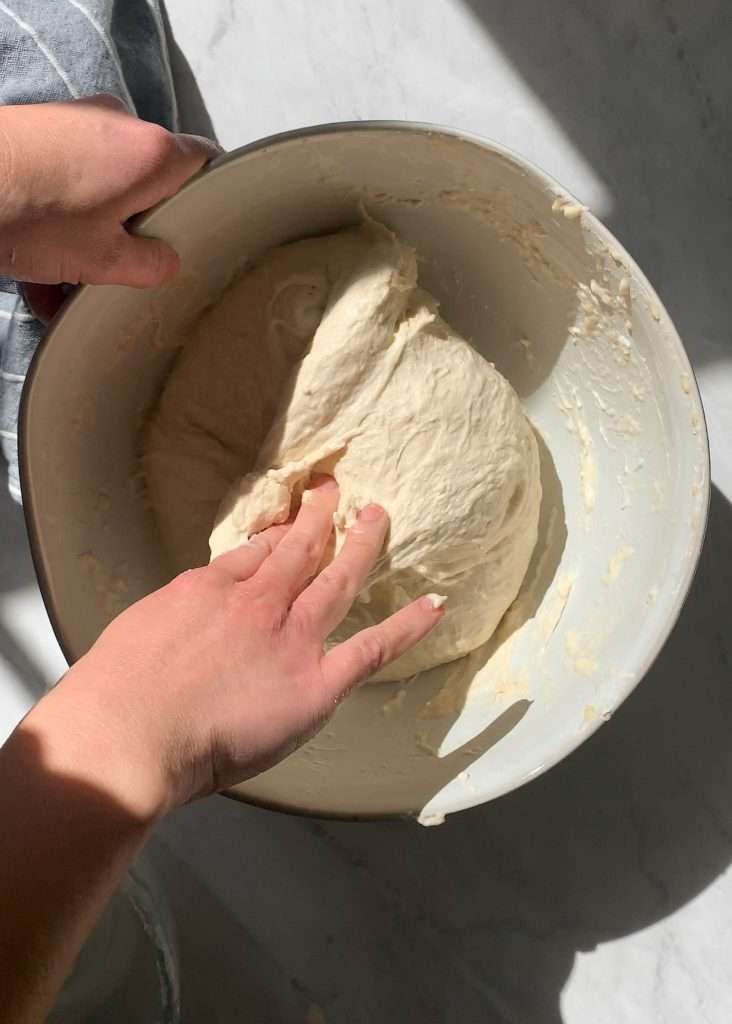
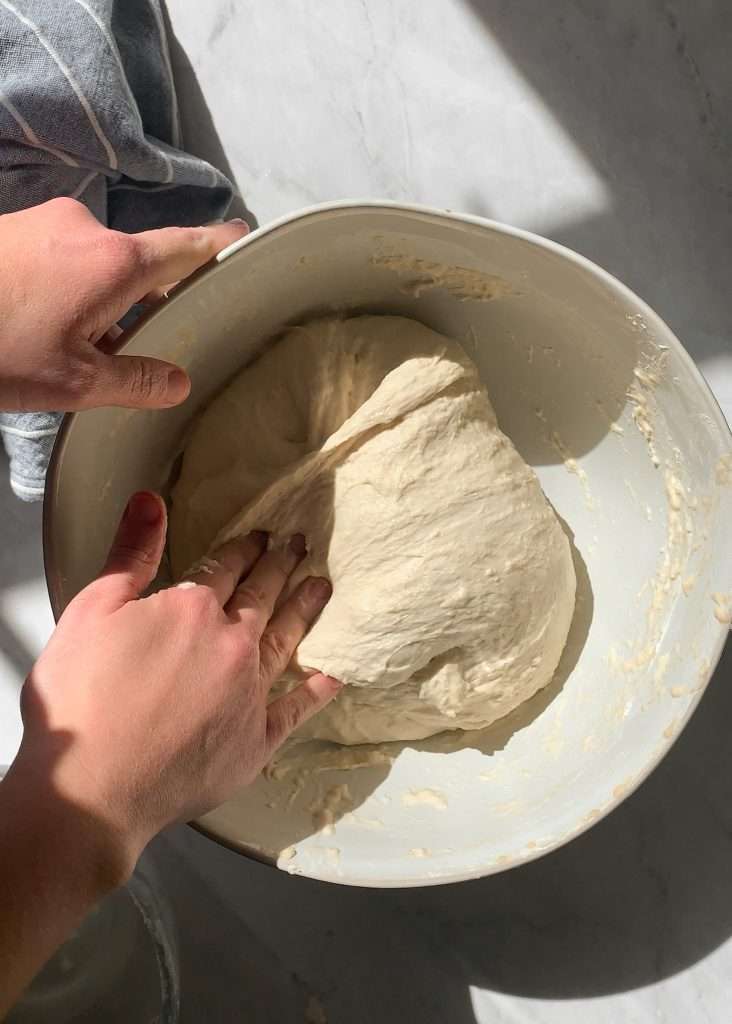
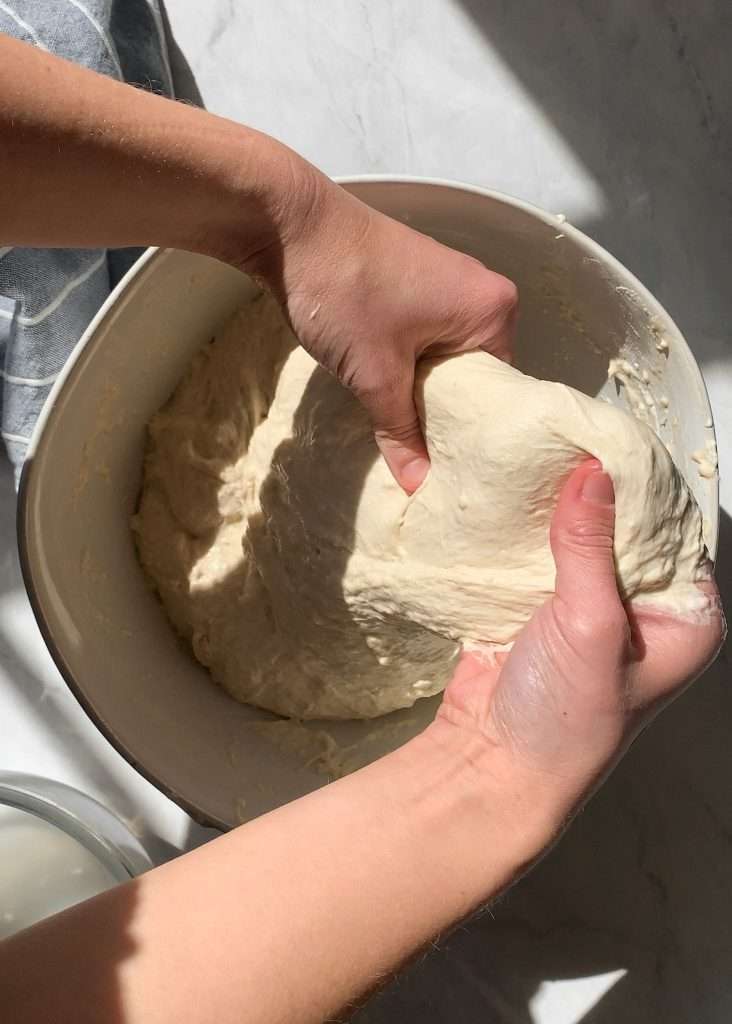
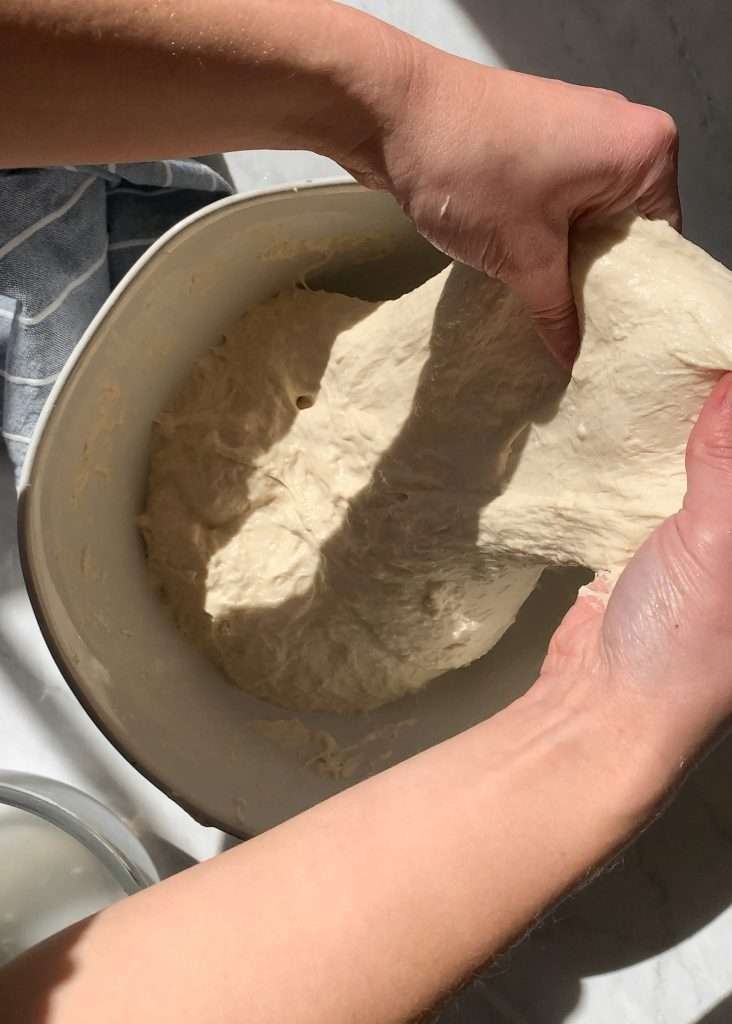
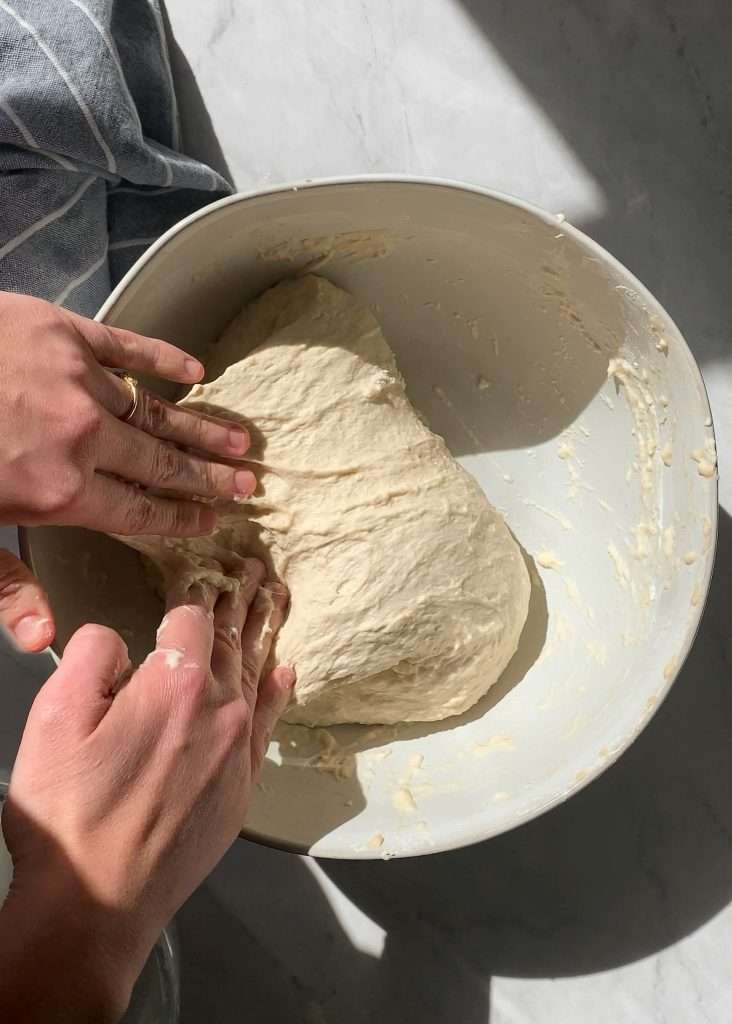
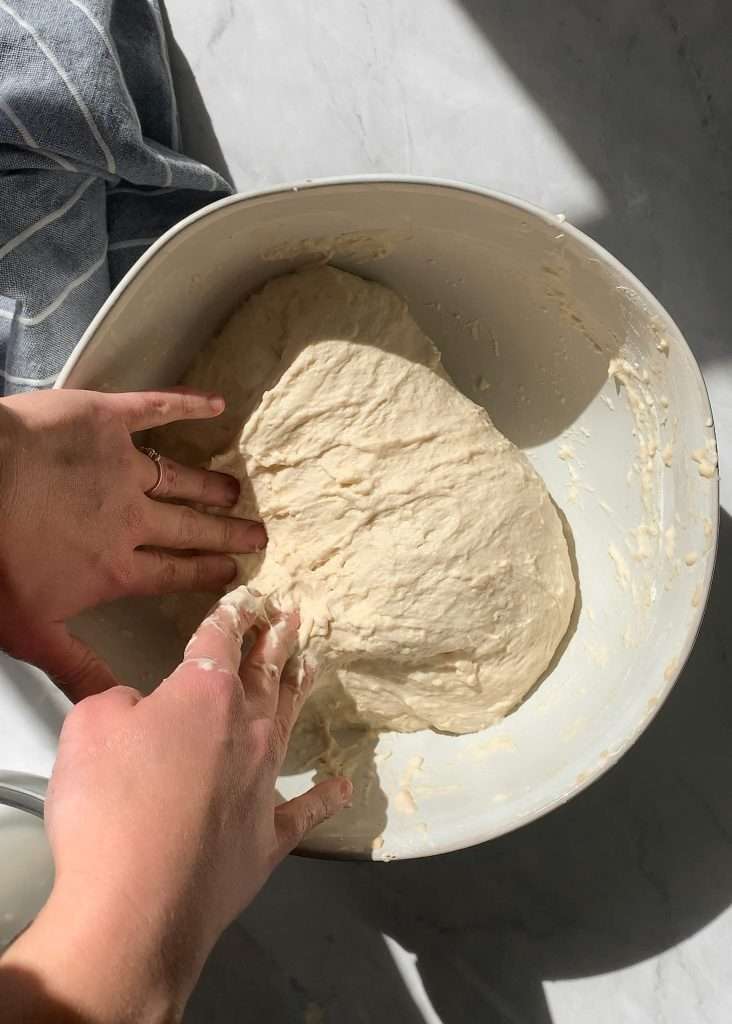
Here is how the dough should look in the very beginning vs. after the two stretches and folds:


Overnight Focaccia Digestability
Sourdough is the oldest form of bread. Experts say that the bread originated in Egypt long ago… as in 1,500 BC. Since commercial yeasts were obviously not available back then, bread products had to be naturally leavened using wild yeasts.
Wild yeasts are captured in a sourdough starter along with flavor-developing microorganisms, like lactic acid bacteria. When I say “captured,” I mean they come from the flour you use to make them.
Wild yeats are significantly more acid-tolerant than packages of baker’s yeast. So the yeasts in sourdough are still very active and able to produce carbon dioxide to make the bread rise even when they’re in the presence of acid-producing bacteria.
Visit our sourdough starter blog to learn more about the microbiology of sourdough starters.
Since sourdough ferments during a longer rise time than traditional bread, it’s much easier to digest and more flavorful. The flavor comes from the wild yeasts and bacteria metabolizing the sugars in the dough during the long rise and producing acids as byproducts.
This is also why the bread is easier to digest! Essentially the microorganisms do some of the digesting for you in this sourdough bread recipe.
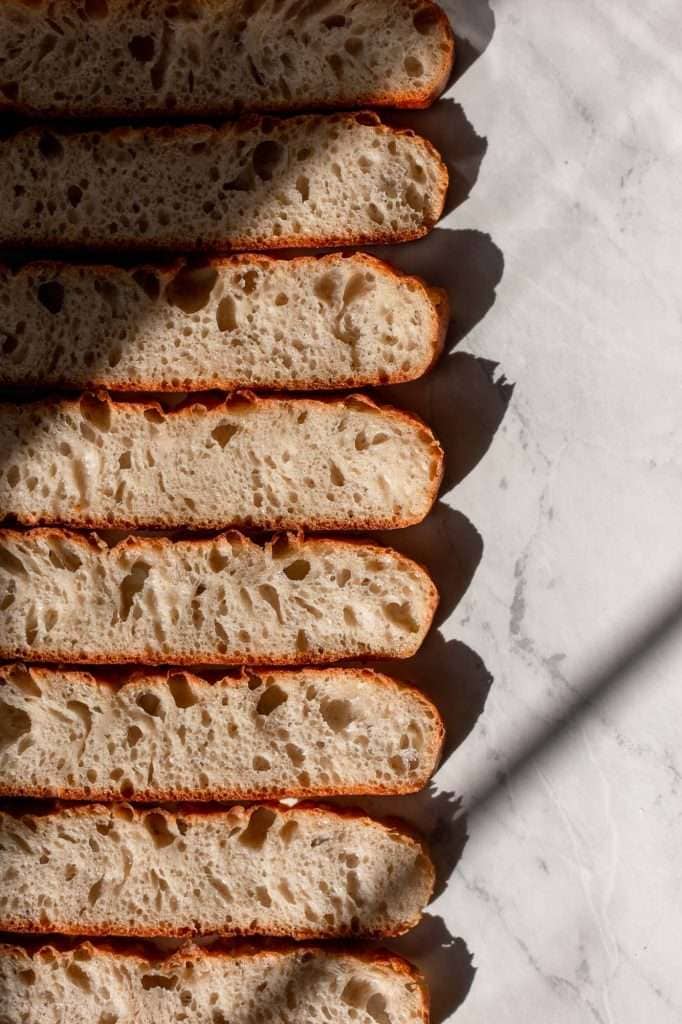
Sourdough Overnight Focaccia Bread Nutrition
Sourdough bread is made out of flour, just like regular bread. However, the fermentation process makes the nutritional components of the flour more bioavailable.
Lactic acid bacteria in sourdough starters can reduce phytic acid, the compound that can prevent nutrient absorption in regular bread. Without the phytic acid binding to the minerals, you can absorb more potassium, phosphate, magnesium, folate, and zinc from the bread.
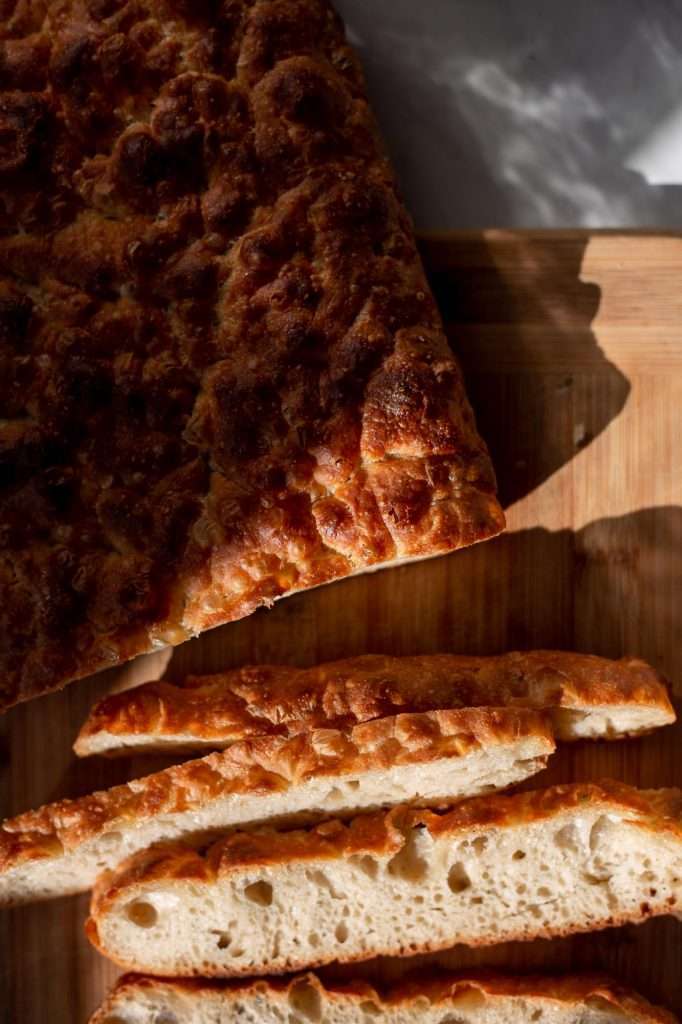
Why Organic Flour is the Best for Sourdough
When we are making sourdough bread, it all about allowing robust microbial growth and fermentation. If we want the most substantial microbial growth, we need to use organic flour because it is not sprayed with synthetic chemical pesticides, fungicides, and fertilizers.
The chemicals in conventionally grown grains can inhibit microbial growth and kill microorganisms. Flour milled from organic grains have not been exposed to synthetic pesticides and is better for fermentation microbes to thrive. Also, organic flour has more nutrients and is a lot healthier because of the way the grain is grown.
Now, I have successfully baked with non-organic flour plenty of times, but it’s not my favorite, and the results are not as good as when I bake with organic flour.
My rule for sourcing flour is to shop as small, local, and organic as possible. I really enjoy buying all of my flour from Lindley Mills.

How to Customize Sourdough Overnight Focaccia
It’s so easy to customize focaccia bread! You can keep the bread plain or use basically any topping you want.
To add toppings simply sprinkle them onto the dough, with the olive oil before you dimple the dough with your hands. Some of my favorites to add to focaccia are:
- Feta cheese and olives
- green onions, garlic and fermented jalapeños
- Pecans, Cinnamon, Honey, and apples
- Red onions and fermented cherry tomatoes
Other Sourdough Recipes to Try
- How to Make a Sprouted Rye Sourdough Starter
- No-Knead Sourdough Bread with Sauerkraut and Onion
- The Best Maple Pecan and Cinnamon Sourdough Bread Recipe
- Learn How to Make A Loaf of Sourdough Sandwich Bread


Customizable Sourdough Focaccia Bread From Scratch
With just four main ingredients, you can make sourdough overnight focaccia bread. Learn how to make the easiest to digest long fermented focaccia bread.
- Prep: 10 minutes
- Cook: 1 hour
- Total Time: 7 hours 10 minutes
Ingredients
- 200 grams sourdough starter
- 650 grams organic bread flour
- 600 grams water
- 20 grams salt
- olive oil
Instructions
- Mix all the ingredients in a large bowl. Mix just until the ingredients come together into a rough, shaggy dough ball. Let it sit for an hour.
- Stretch and fold the dough. Wet your hand, scoop around the edge of the dough and the bowl, pull up the dough without breaking it, and fold it over the top of the dough. Spin the bowl around and repeat stretching up and folding over until the dough smoothes out a bit. Let it sit for two hours. (see photos above for a visual on stretching and folding).
- After two hours, stretch and fold the dough again using the same method.
- Cover the dough and place it in the fridge overnight. (if you do not want to ferment it overnight, you don’t have to. just move on to the next step)
- Line a 9×11 baking pan with parchment paper, and rub the parchment paper with a small bit of olive oil.
- Transfer the dough to the parchment paper lined pan, gently pull it out to almost fit in the bottom of the pan.
- Let the dough relax out and rise for two to three hours until it doubles in size. It should fill to fit the pan.
- Drizzle about two tablespoons of olive oil over the dough, and any toppings you want to add. Coat your hands in olive oil and use your fingers to dimple the dough.
- After dimpling let the dough rest for 30 minutes. While it rests, preheat your oven to 425° F.
- Bake for 30 minutes, rotate the pan, and bake for another 30 minutes.
- Allow to cool for an hour before slicing.
Notes
- this recipe is for fermentation at a moderate room temperature (about 75° F). If it is hotter in your home everything will go faster, if it is cooler, everything will take longer.






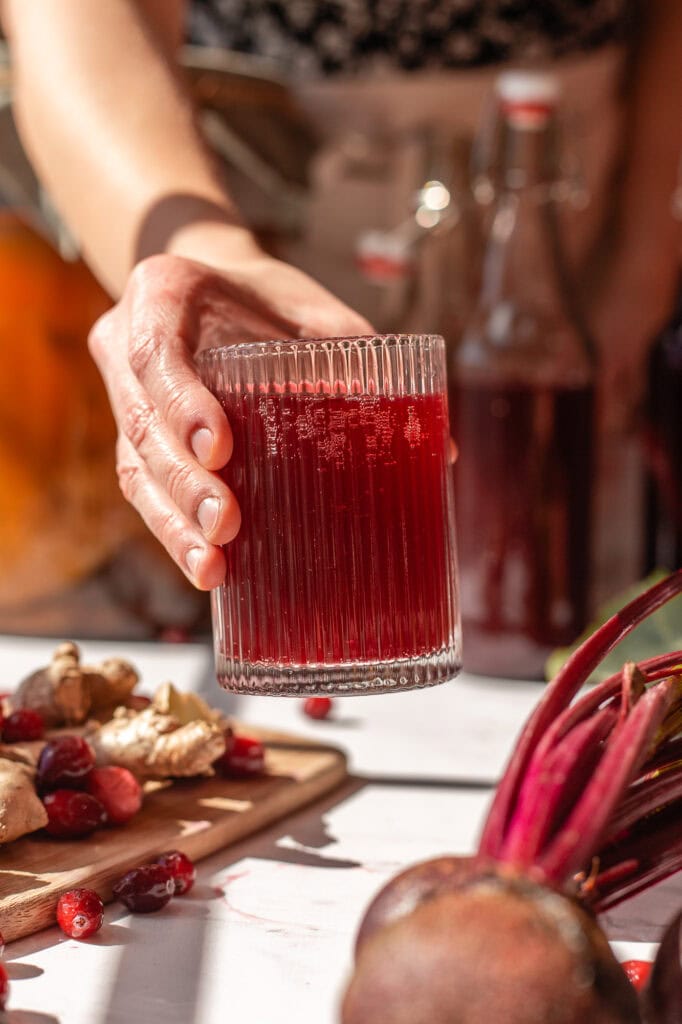









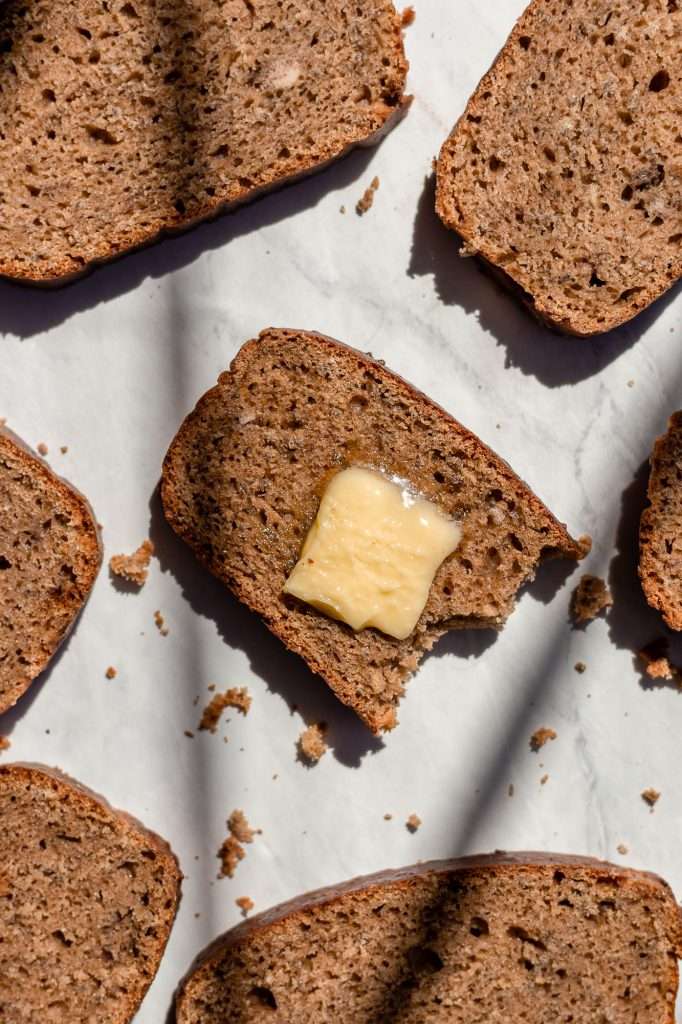
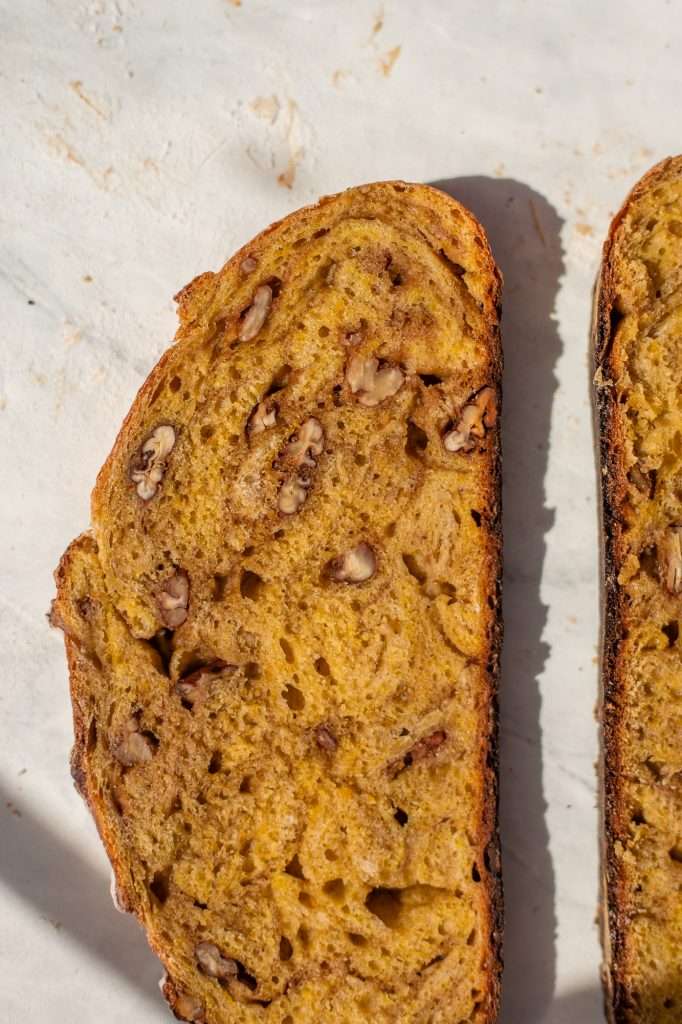
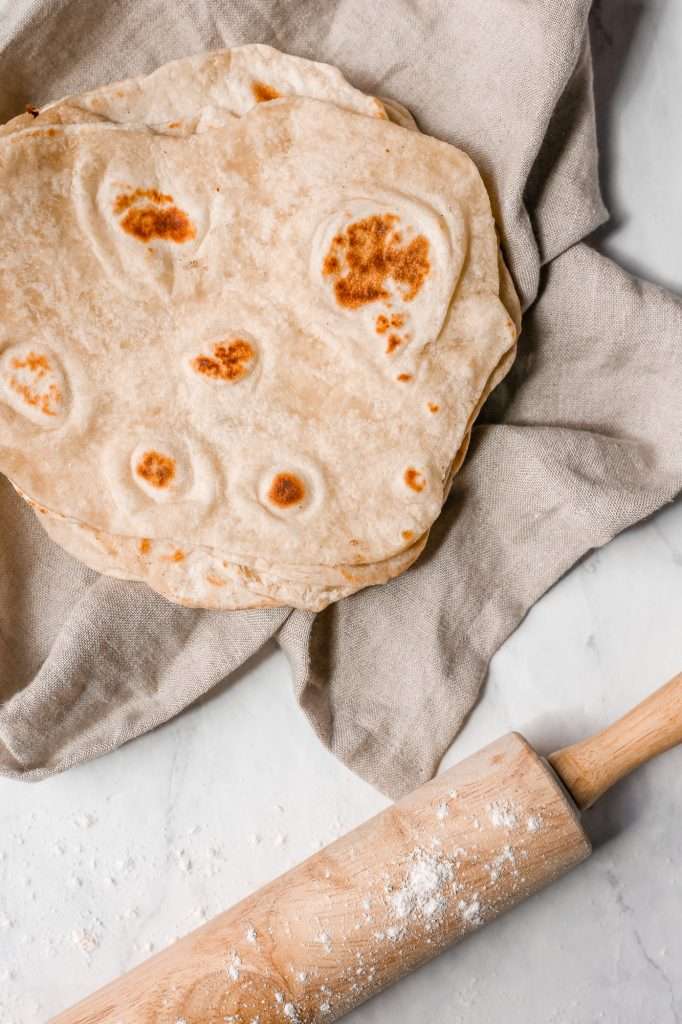

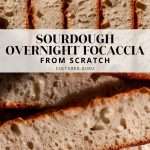
Hi. Where is the version for the focaccia without overnight fermentation? It was here like 3 weeks ago! And now I can’t find it.
Hello! It’s the same recipe. Just skip the overnight step (step 4) and move on to the next step.
So simple and so delicious! Will not be making any other type of focaccia ever again. We love to use the leftover oil from sun-dried tomatoes in lieu of olive oil *chef’s kiss*
My focaccia turned out gummy in the middle. I wonder if this is because the recipe didn’t ask for the dough to double in size before putting it in the fridge? I waited the total of 3 hours, did 2 s&f, and put it in the fridge overnight. Should I have waited for it to double?
Did you follow steps 5-7 after the fridge proof? Specifically step 7, where you let it double in size. Also check the recipe notes about temp!
Yes! I let it double after cold proofing. Strange, I wonder why it was gummy!